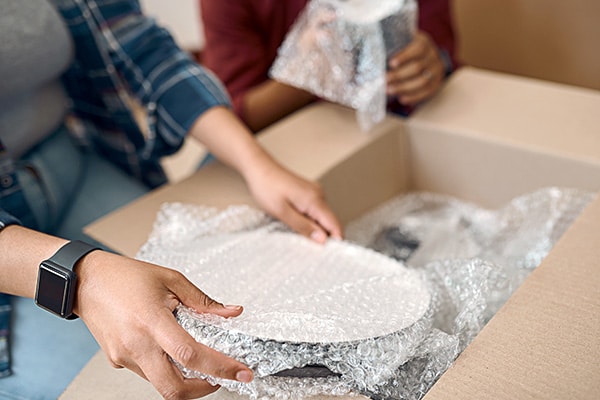Best Practices for Moving Antiques and Art
Moving antiques and art pieces requires more than just packing them away and hoping for the best. These items often carry not only substantial monetary value but also irreplaceable sentimental worth. Ensuring their safe transport demands meticulous planning and specialized handling.
This article provides essential guidelines on how to securely move your treasured antiques and art, minimizing the risk of damage and loss during the process.
Evaluate and Inventory Your Items

Before you even begin packing, it’s crucial to thoroughly evaluate and document each item. Start by assessing the condition of your antiques and art, noting any existing damage or peculiarities that could affect how they should be handled and packed.
Create a detailed inventory list that includes descriptions, photos, and any appraisals or certificates of authenticity you have. This inventory will not only help you organize your packing process but will also be vital for insurance purposes and in the unfortunate event of damage or loss.
Choosing the Right Moving Service

When you’re working with white glove movers, selecting the right moving service becomes crucial. These specialized movers offer the expert handling and meticulous care necessary for safely transporting valuable antiques and art.
Look for companies with a solid reputation and extensive experience in dealing with delicate items. This ensures that your treasures are handled with the utmost precision throughout the moving process, significantly reducing the risk of damage.
Proper Packing Materials
The right packing materials are essential to protect your valuables during the move. For artwork, use acid-free paper to wrap pieces before securing them with bubble wrap, which provides a cushion against shocks and bumps.
Sturdy, custom-made crates lined with foam are ideal for both art and antique furniture, as they prevent movement and offer structural protection against external pressures. Avoid using materials like newspaper directly on items, as the ink can transfer and cause damage.
Techniques for Packing Fragile Items

Packing fragile items requires careful technique and patience. Start by securing any loose parts or removable elements of antique furniture with wrapping and padding to prevent them from shifting or scratching other parts of the item.
Wrap glass components or delicate figurines in soft, acid-free tissue paper before adding a layer of bubble wrap for extra protection. Ensure that each piece is snugly fit into its box or crate with no room to move around; gaps should be filled with additional padding. Label each package clearly with ‘Fragile’ and ‘This Side Up’ to alert handlers to the need for special care.
Handling Large or Unusual Items
Large or unusually shaped antiques and artwork pose particular challenges. For oversized paintings, sculptures, or pieces of furniture, consider building custom wooden crates that match the dimensions and specific protection needs of each item.
Reinforce the crate with cushioning materials and secure the item in place to prevent any movement. When moving these items, always use appropriate equipment like dollies or custom trolleys, and ensure there are enough handlers to safely maneuver the item without risking a drop or collision.
Insurance and Liability
When relocating valuable antiques and art, securing proper insurance is imperative. Review your current homeowner’s insurance to verify whether it covers high-value items during a move, and consider purchasing additional transit insurance that specifically protects against loss or damage while in transport.
Discuss with your moving company what liability coverage they offer. Reputable movers specializing in antiques and art should provide clear terms and adequate coverage for the items they handle. Make sure all agreements are documented in writing to avoid any potential misunderstandings in case of an incident.
Transport Considerations

Choosing the right transport method is crucial for the safety of your antiques and art. Opt for vehicles that are equipped with climate control and air-ride suspension to protect against environmental factors and rough handling. Verify that the transport vehicle is clean, well-maintained, and suitable for the items you are moving.
If possible, arrange for non-stop transport to minimize handling and the risks associated with multiple loading and unloading events. For international moves, ensure that all customs and import regulations are carefully followed to avoid delays and possible damage.
Setting Up for the Move
Preparing both your current and new location is essential for a smooth moving process. Ensure that paths are clear of obstacles and that floors are protected with padding or carpets to prevent scuffs and scratches during item removal or placement.
If necessary, measure doorways, elevators, and staircases to confirm that large items can pass through without issue. Inform the moving team about any peculiarities or specific challenges they might face at either location. Such preparations can significantly reduce the risk of damage and help the moving day proceed smoothly.
Unpacking and Post-Move Care
Once your antiques and art reach their new destination, the process of unpacking requires as much care as packing. Open boxes and crates gently and inspect each item for any possible damage incurred during transit. It’s advisable to perform this check with the moving team present, so any claims can be addressed immediately.
Gradually acclimate sensitive items to their new environment, especially if there are significant differences in temperature and humidity. This careful handling can prevent sudden material stress and prolong the life of your valuable pieces.
Long-Term Preservation
After moving your antiques and art, consider long-term preservation strategies to maintain their condition. This might include controlling light exposure, humidity, and temperature in their display or storage areas. Regular maintenance, such as dusting with appropriate materials and inspecting for signs of deterioration, will keep your items in pristine condition. Seek professional advice for any specific care requirements related to unique materials or historical pieces.
Conclusion
Moving antiques and art involves more than simple relocation; it requires a comprehensive approach that considers packing, insurance, transportation, and long-term care. By following these best practices, you can ensure that your valuable items are protected throughout their journey and continue to bring beauty and history to your home for years to come.
Whether you’re an experienced collector or a casual enthusiast, the right preparation and professional assistance make all the difference in preserving these treasures during a move.







